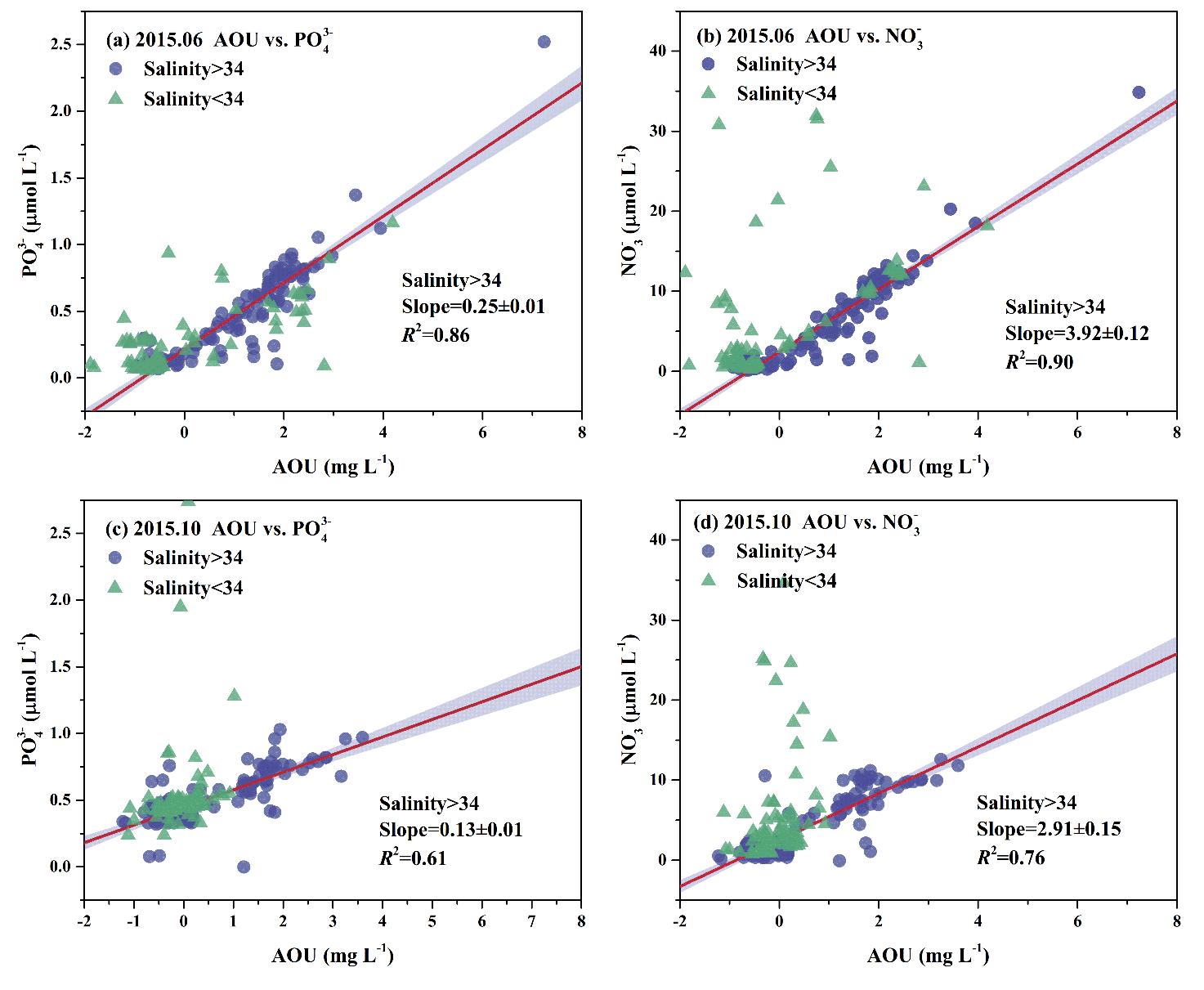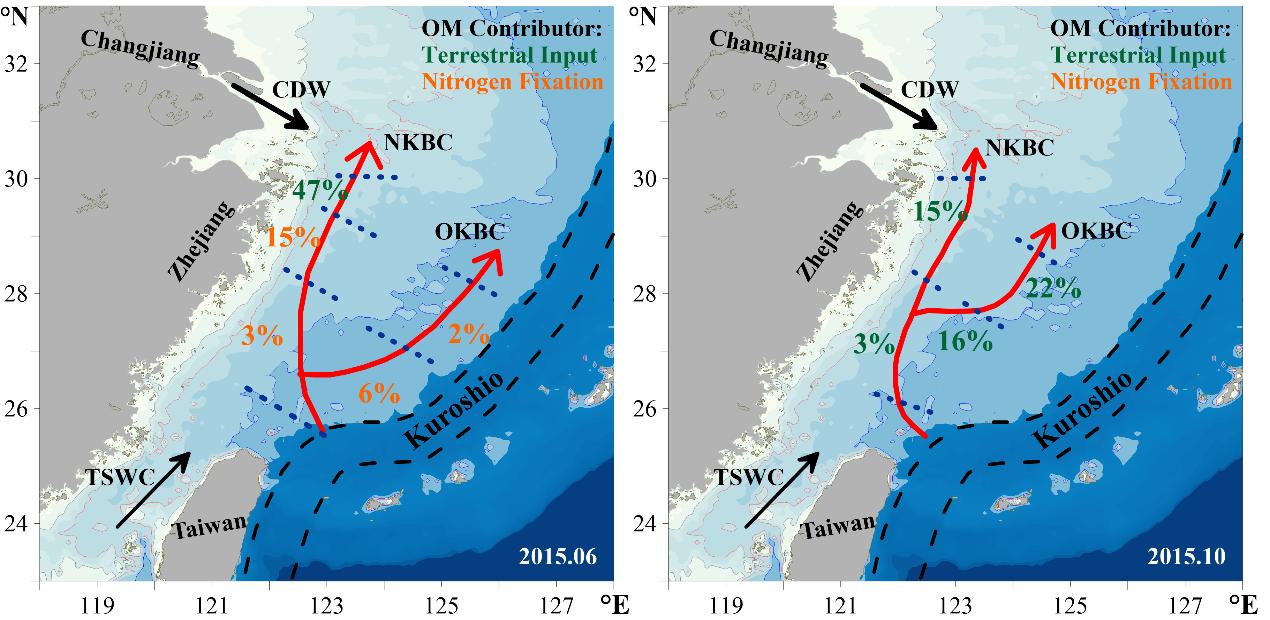The East China Sea (ECS) was affected by severe hypoxia, which exerts significant influences on living resources, alterations of biogeochemical cycles and ecosystem degradation. Previous studies have proved that organic matters (OM) decomposition, as a series of oxidations, in the Kuroshio Subsurface Water (KSSW) played a significant role in forming the coastal hypoxia.
However, sources of reactants for nourishing OM decomposition are unknown, and understanding the game between marine and terrestrial input is inevitable.
Recently, the research team led by Prof. YU Zhiming from the Institute of Oceanology of the Chinese Academy of Sciences (IOCAS) provided new information on the sources of decomposed OM in KSSW on hypoxia formation in ECS by applying the nitrate isotopes technique.
The study was published in Marine Pollution Bulletin on Mar. 10.
This study revealed the stronger oxidations in the KSSW than ambient waters in either June or October on the ECS shelf, which reduced the dissolved oxygen in the bottom. The reaction was stronger in June than that in October.
More details were found through the nitrate isotopes. The nitrogen from N2 fixation was introduced into the bottom nitrate in KSSW in the southern ECS during June. However, those signals were hardly observed during October. Instead, the decomposition of terrestrial OM enhanced in the northern ECS during June and most of the ECS during October.
Based on the isotopic balance equation, the contributions from both atmosphere and land were demonstrated. The terrestrial and marine sources contributed almost equally to the development of ECS hypoxia, which judged the impact of human activities and natural process on coastal hypoxia quantitatively.
"These results provide vital information for understanding the mechanism of hypoxia formation driven by eutrophication and oceanic circulation," said Prof. YU, the corresponding author. "It is crucial for nutrient management and policy making in mitigating hypoxic conditions."
"The nitrate isotope is powerful constrain in studying the marine nitrogen cycles, it is expected to provide more insights into the typical environmental disasters in the near future," said Dr. WANG Wentao, first author of the study.
This work was financially supported by the National Natural Science Foundation of China and the Shandong Provincial Natural Science Foundation, China.

Fig. 1 The correlations between PO43- (μmol·L-1), NO3- (μmol·L-1) and AOU (μmol·L-1) at different salinities in June (a, c) and October (b, d) 2015. The shaded areas represent for the 95% confidence intervals.

Fig. 2 The contributions from terrestrial input and N2 fixation to decomposed OM in the KSSW on ECS shelf. The results were calculated through the isotopic equilibrium equation of nitrate.
Wentao Wang, Zhiming Yu*, Xiuxian Song, Lianbao Chi, Peng Zhou, Zaixing Wu, Yongquan Yuan. Hypoxia formation in the East China Sea by decomposed organic matter in the Kuroshio Subsurface Water. Marine Pollution Bulletin, 2022, 177: 113486.
YU Zhiming, WANG Wentao
Institute of Oceanology
Email: zyu@qdio.ac.cn; wtwang@qdio.ac.cn
(Editor: ZHANG Yiyi)
|
|

Address: 7 Nanhai Road, Qingdao, Shandong 266071, China
Tel: 86-532-82898902 Fax: 86-532-82898612 E-mail: iocas@qdio.ac.cn


